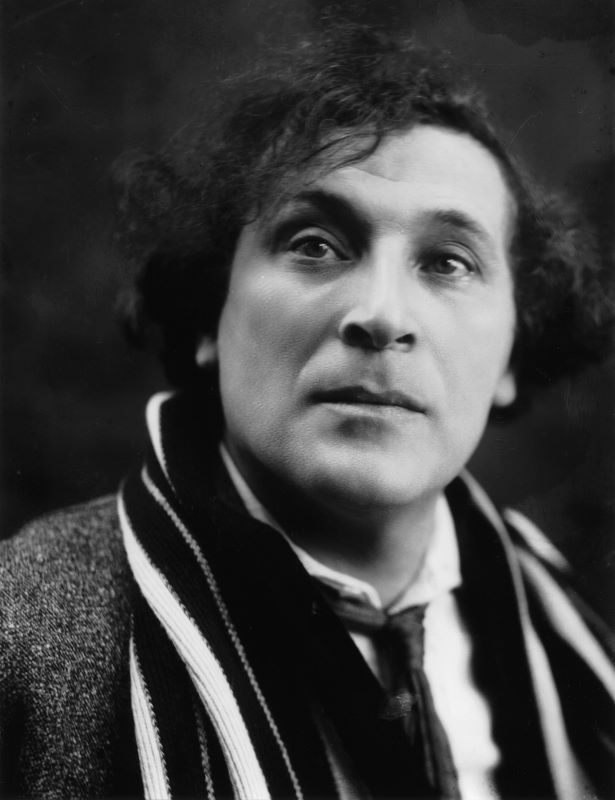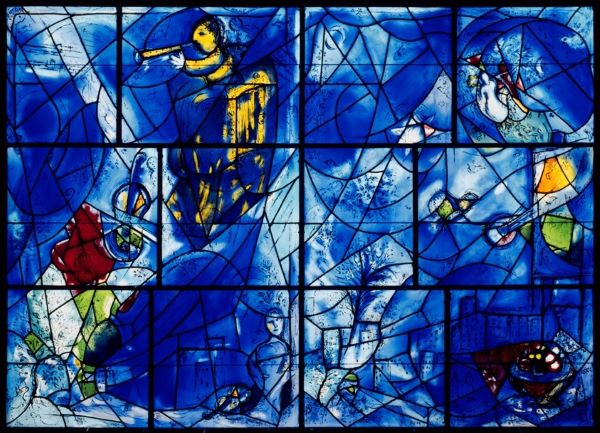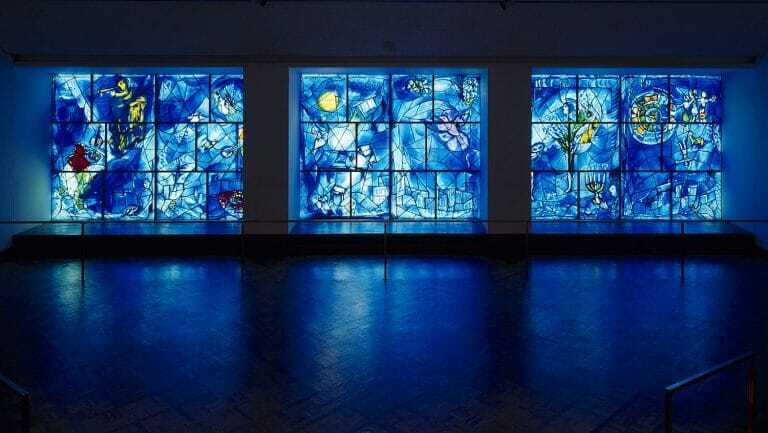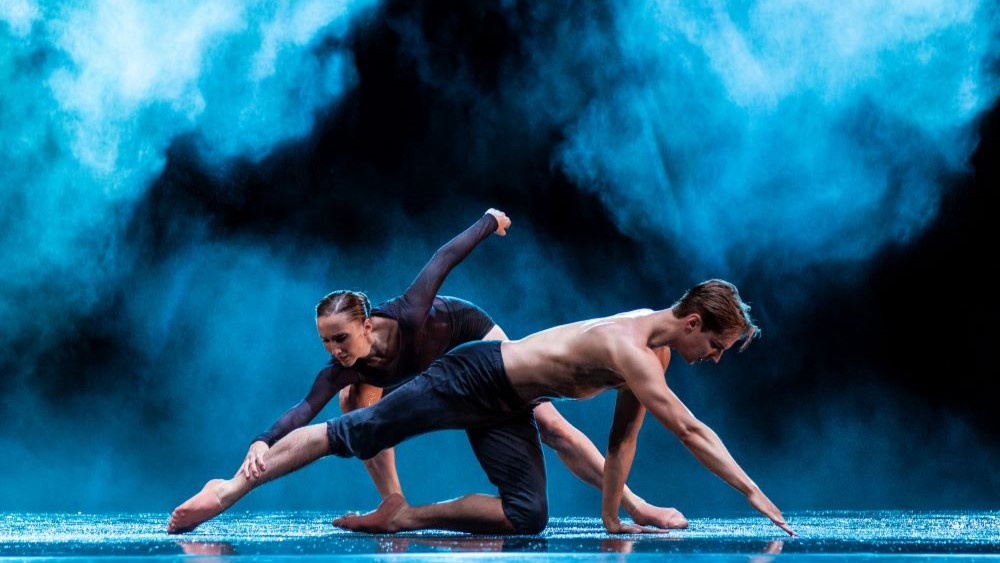A Window into One Thousand Pieces’ Inspiration
PNB’s next performance features Alejandro Cerrudo’s One Thousand Pieces. Created to celebrate Hubbard Street Dance Chicago’s 35th anniversary season, this large-scale work is inspired by Marc Chagall’s America Windows. Today on the PNB Blog, we’ll dive deep into Chagall’s stained-glass masterpiece and how it influences One Thousand Pieces.

Marc Chagall (1887 -1895), a Jewish artist, is best known for his richly colored paintings and illustrations and his contributions to the Cubist, Modernist, and Expressionist movements. His work is often personal, depicting Jewish folklore, village life, and more. America Windows is no different. Chagall created the piece as a demonstration of his thanks to America and the city of Chicago in 1977. After taking refuge in the US during the Holocaust of World War II, Chagall was inspired by the country and its support of artists. He created America Windows in honor of the US bicentennial, and he gifted the piece to The Art Institute of Chicago, which had been a large supporter of his work since moving to the US.
When creating the stained-glass windows, Marc Chagall collaborated with glassmaker Charles Marq. To begin, Chagall generated designs for the stained glass in watercolor and gouache. Then, Charles Marq made the designs lifesized to decide what glass colors to use and where to place the canes (rods of glass used to connect different glass panels). When creating the glass panels, Marq utilized an innovative technique that involves layering three different colors of glass on top of one another to build one pane. Combined with light, these layered pieces of glass realize Chagall’s unique vision of dreamy colorwork. After Marq constructed these various glass pieces, they were sent back to Chagall’s studios, where he painted additional designs onto the glass using the back of his paintbrush and his fingers. Each piece was then refired to ensure the paint lasted, and then the windows were reassembled.
The completed windows are a stunning combination of color and light. They are hung in their own room at The Art Institute of Chicago and measure 8 feet tall and 30 feet across. When you observe the windows, you are immersed in pools of watery blue light. Pops of pink, yellow, and red draw you into the windows’ designs as different images representing music, painting, literature, architecture, theater, and dance are sprinkled throughout the glass. Chagall said, “Stained glass is uplifting, it requires gravity and passion. It must come alive through the light it receives.” Through his manipulation of light and color in America Windows, Chagall transports the viewer into a dreamy, contemplative experience of glowing hues.


When creating One Thousand Pieces, Alejandro Cerrudo drew on his own experience viewing America Windows. Rather than trying to replicate the illustrations of the stained glass work, Cerrudo aims to re-create an experience of viewing America Windows. Cerrudo uses some of the properties of stained glass in the piece, playing with light, reflection, and color. To capture these elements on stage, Cerrudo utilizes water, mirrors, and other unusual stage elements in the work. Cerrudo also chose to use a large cast of dancers in One Thousand Pieces, mimicking the many pieces of glass that were used to create America Windows. Some of the most powerful moments in One Thousand Pieces involve the large cast moving in unison; together, the many dancers create something beautiful.






